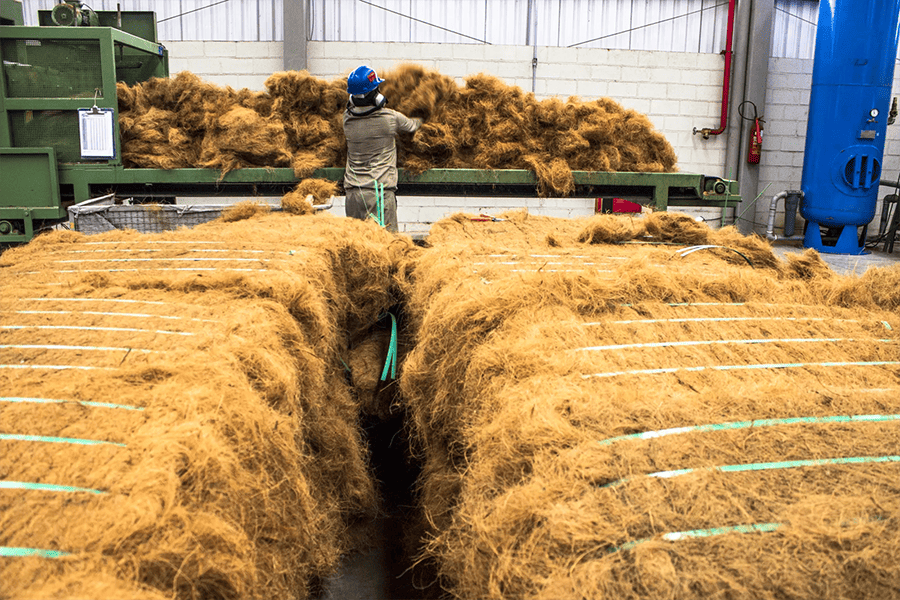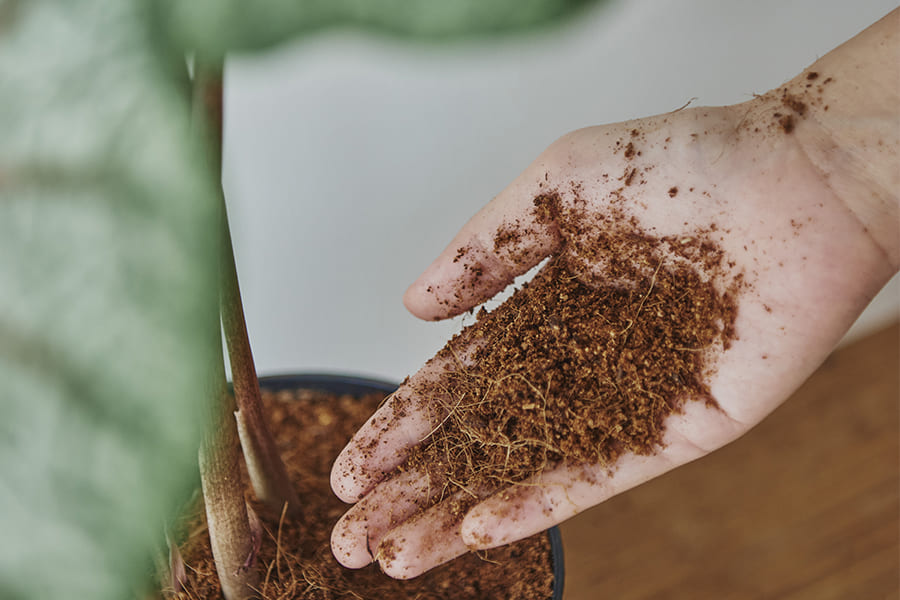BLOG POSTS & ARTICLES
Growing Bonsai with COCO Coir: Benefits and Tips

Bonsai, derived from the Japanese words "bon" (meaning tray) and "sai" (meaning plant), is a captivating horticultural art form that involves cultivating miniature trees in containers. These meticulously crafted living sculptures uniquely blend natural beauty and artistic expression. Bonsai trees, through careful pruning and shaping, convey the essence of mature, full-sized trees while fitting gracefully on a tabletop.
Importance of right growing medium
One of the fundamental aspects of successful bonsai cultivation is selecting the appropriate growing medium. The choice of growing medium profoundly influences the health, growth, and longevity of your bonsai trees. It's akin to choosing the right soil for a garden but on a much more intricate level. The growing medium affects the root system's development, water retention, and nutrient availability, all of which are critical for maintaining the delicate balance of a bonsai's miniature ecosystem.
COCO coir, a natural fibre extracted from coconut husks, has gained popularity in recent years for its versatility and sustainability in horticultural practices. Its unique characteristics have made it an excellent alternative to traditional bonsai substrates like peat moss or clay-based soils.
While COCO coir may not be the first choice that comes to mind when thinking about bonsai cultivation, it offers several key advantages that can significantly benefit your bonsai trees. From its exceptional water retention capabilities to its eco-friendly nature, COCO coir addresses many of the challenges faced by bonsai enthusiasts, particularly those new to the art.
COCO coir
COCO coir, often simply referred to as "coir," is a versatile and sustainable growing medium made from the fibrous husk of coconuts (Cocos nucifera). The coir fibres are extracted from the outermost layer of the coconut, which is known as the coir husk or coir pith. Once the coconuts are husked, the coir fibres are separated from the coir pith. These fibres are then cleaned, processed, and packaged for various horticultural applications.
Advantages of COCO coir as a growing medium
Excellent Water Retention: COCO coir has a remarkable ability to retain moisture, ensuring that bonsai trees have a consistent water supply. This feature is particularly valuable for maintaining optimal soil moisture levels in bonsai containers, preventing both under and overwatering, which are common challenges in bonsai care.
Enhanced Aeration: While COCO coir retains water effectively, it also provides excellent aeration to the roots. This is crucial for preventing root rot and promoting healthy root growth in bonsai trees.
pH Neutrality: COCO coir is typically pH neutral, which means it has a near-neutral pH level of around 5.5 to 6.8. This neutrality provides bonsai enthusiasts with a stable substrate that allows for better control of the pH environment, a critical factor in nutrient absorption and overall tree health.
Nutrient Retention: COCO coir can hold onto nutrients effectively, making it an excellent medium for delivering essential nutrients to bonsai trees. This feature reduces the need for frequent fertilisation and ensures a steady supply of nutrients to support bonsai growth.
Resistance to Compaction: Unlike some traditional soil-based bonsai substrates, COCO coir is less prone to compaction over time. This means that the substrate maintains its structure and aeration, reducing the need for frequent repotting.
Environmentally Friendly: COCO coir is an eco-friendly growing medium. It is a renewable resource, as coconuts are continually harvested for their fruit. Additionally, COCO coir is biodegradable and does not harm the environment when disposed of responsibly.
Preparing COCO coir for bonsai use
Step1: Selecting the Right COCO Coir Product
Choosing the right COCO coir for bonsai cultivation is essential for your trees' health and growth. COCO coir selection impacts the growing medium's properties, such as water retention, aeration, and pH levels, which are crucial for bonsai care.
COCO coir comes in blocks, chips, and fibre, each suitable for different bonsai species and growth stages:
Blocks: Versatile and customizable, these dehydrated blocks require rehydration. Ideal for bonsai enthusiasts who want tailored growing mediums.
Chips: Provide excellent aeration and drainage for bonsai species that thrive in well-ventilated soil, especially during development stages.
Fibre: Fine-textured with superior water retention, ideal for moisture-loving bonsai species, particularly tropical varieties.
Factors to consider when choosing COCO coir:
Origin: The source of COCO coir affects quality and consistency. Choose reputable sources for reliability and purity.
Quality: Opt for high-quality COCO coir without debris, salts, or pathogens. It should have a consistent texture and colour.
Pre-washed or Buffered: Some COCO coir products are pre-washed or buffered to remove excess salts, making them better suited for bonsai. Check labels for these features if concerned about salt content.
Plantbest offers high-quality coco coir products in various shapes and sizes. Do check them out!
Step 2: Rehydrating and Rinsing the Coir
Before using COCO coir as a bonsai growing medium, it needs proper rehydration from its compressed state. Follow the manufacturer's instructions on water-to-coir ratio and soaking duration, ensuring the best results. Use clean, chlorine-free water to prevent potential salt buildup. Soak the coir until it expands and becomes fluffy, which may require stirring or fluffing during soaking. Once it's loose and voluminous, your COCO coir is ready for use, providing ideal moisture retention and drainage for your bonsai roots.
Step 3: Mixing with other components
Bonsai enthusiasts often find value in blending COCO coir with other components to create a customised growing medium. This mixing process can be particularly beneficial when aiming to improve aeration and drainage, or when tailoring the blend to suit specific bonsai species or growth conditions. Various components such as perlite, sand, or bark offer unique advantages: perlite enhances aeration and helps prevent compaction, sand improves drainage, and bark contributes to aeration while also facilitating slow nutrient release. The specific mix ratio should be determined based on factors such as the bonsai species being cultivated and the local climate.
It is essential to monitor pH levels closely because the mixing of these components can influence pH levels, and regular adjustments may be necessary to maintain them within the optimal range for the specific bonsai being grown. Additionally, nutrient availability may change as a result of the new growing medium, which may necessitate adjustments to the fertiliser regimen.
Common Challenges and Solutions
Salt Buildup:
-
Use clean, chlorine-free water for rehydration to minimise salt introduction.
-
Implement a regular flushing routine with distilled or rainwater to leach excess salts from the medium.
-
Monitor runoff water's electrical conductivity (EC) for high EC readings, indicating salt buildup.
Fungus or Mould Growth:
-
Maintain good ventilation and air circulation to prevent moisture buildup that fosters fungal growth.
-
Ensure proper drainage in bonsai pots to allow excess water to escape.
-
Avoid overwatering; use the "finger test" for watering needs.
-
If mould or fungus appears, carefully remove affected areas and apply a suitable fungicide, following instructions.
Tips for Bonsai Health in COCO Coir:
-
Monitor root health for signs of rot due to excessive moisture retention and report if necessary.
-
Watch for nutrient deficiencies in leaves and adjust fertiliser regimen, considering pH levels.
-
Manage watering carefully to prevent overwatering and ensure adequate drainage.
-
Keep an eye on salt accumulation by monitoring runoff water's EC levels.
-
Conduct periodic pest inspections and employ organic control methods if needed.
-
Be adaptable and regularly assess your bonsai's health, making necessary adjustments to the COCO coir mix or care routine to ensure optimal growth and well-being.











__(3).jpg)









